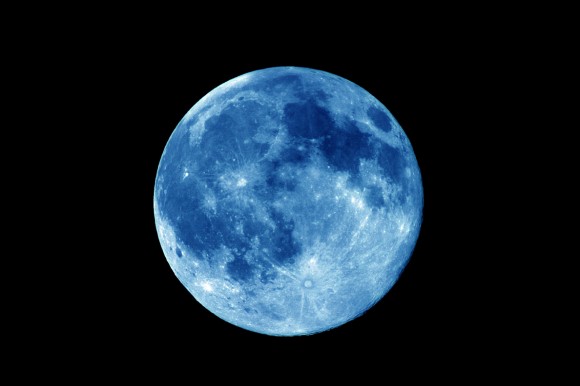Blue Moon Coming Thursday Night
After a swampy day here in southern New England, we may clear out just in time to catch a Blue Moon hanging over the landscape. 'A blue moon!?' you gasp...must be rare! After all, it should happen 'once in a blue moon.' Wellllll...not so much. They actually happen every couple of years (on average, every 2.7 years).
But you've already clicked on this article and I don't want to completely waste your time, so let's talk more about what it actually is.
Note: Only click on and watch this video if you don't mind being mooned in the sophomoric sense. If you've watched Grease, you know what I mean.
For starters, a blue moon isn't blue. It might be red...or orange...or yellow...or your garden variety white light. Depends on what types of particles are in the atmosphere to scatter around different wavelengths of light for your particular location. Blue is unlikely but not impossible. Smoke particles in the atmosphere would be able to produce a blue light for areas near wildfires or volcanic eruptions. I wouldn't place any high stakes bets on that happening locally, though.
So what is it? The concept is fluid. The current meaning of a blue moon is the second full moon in one calendar month. We had a full moon early on July 2nd, and since the lunar calendar is 29 days, 12 hours, 44 minutes, and 2.8 seconds, we're sneaking in another one before the bell. Actual totality will take place at 6:43am on Friday, July 31st. So we're ballparking it to say it's Thursday night's moon. In fact, the highest chance for clear skies will be after midnight, so best viewing of this may be right before the sun comes up on Friday morning.
Source: http://www.moongiant.com/Blue_Moon_Calendar.php
If you spoke with someone a hundred years ago, they wouldn't follow this definition. You could make a case that a 'blue moon' is much like a 'supermoon.' An astronomical phenomenon that has made it into pop culture because someone at some media outlet was bored and needed something to put on TV or (later on) get clicks on a website. Probably what brought you here, so thanks science! Derechos, the polar vortex, and El Nino all fall under this category. They're things that scientists have noted or talked about for many years, but now make headlines whenever they occur (usually bad ones).
What we now call a blue moon wasn't put into everyday use until the 1940s, and it was because of a mistake. Sky & Telescope misinterpreted an earlier definition of the occurrence, published it, and voila! It caught on. It really gained steam in the 1990s during a slow news cycle (1999 when there were 2 in 3 months), and now we get to pass on this lore to you.
That original, misinterpreted meaning came from the Maine Farmer's Almanac in the early 1900s, and it's confusing enough to understand why it's gone out of style. They declared that if one of the four seasons (winter, spring, summer or fall) contained four full moons instead of the usual three, that the third full moon should be called a Blue Moon. Oof. Let's stick to the second full moon in a single month, please.
Bottom line - full moons are beautiful. When you get two in a month, you're not getting your next full moon any sooner or later than you typically would. But they're lovely and light up the night sky. It's a nice chance to go for an overnight hike or paddle down the river using the old fashioned light source. And they often make for some pretty sweet photos. So bask in the (not blue) light of that big beauty in the sky, and feel free to send in pictures for us to share on WBZ.





